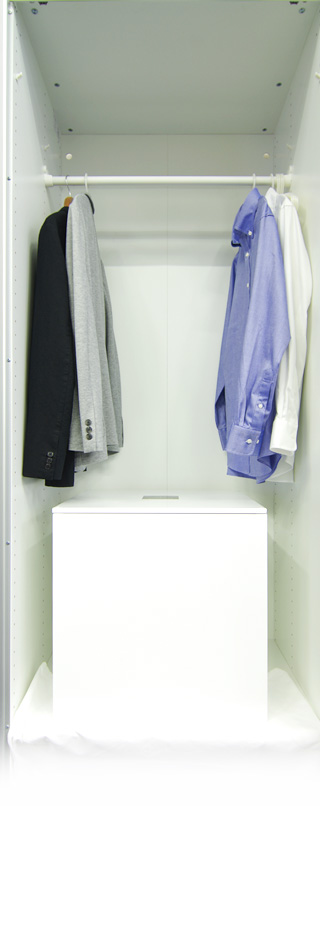

Conventional storage battery systems set scheduled hours to store and use electricity with little flexibility. For example, if the user had a contract where daytime electricity costs are higher and night time electricity costs are lower, the user would select a setting to store electricity in the night hours, and draw power from the battery from the morning on. This way, by combining solar power generated electricity, the daytime purchase amount of power supply will be cut.
However, on rainy days when solar power generation is insufficient, energy from the storage battery may not be enough to cover daytime electricity use, leading to purchasing more expensive daytime power.
Wouldn't it be useful if you could automatically change the time power is supplied, based on weather conditions?
This is where cloud technology comes in. Since the system is connected to the internet, the battery can be controlled based on weather forecasts. After numerous experiments, a control program is developed on the cloud server reflecting weather forecast information. The "clouds" in the sky that interfere with solar power generation are dealt by the IT network’s "cloud" technology.
Power supply at a planned outage was considered carefully as well. When the power supply shortage alarm is activated and picked up at the cloud server, the storage battery will be switched to waiting mode and save its power, to compensate for any power outage that may occur.


In order to use solar power generating systems and storage battery systems, additional "power conditioner" equipment is necessary. Conventionally, two power conditioner units were required; one for the solar power generating system, and one for the storage battery system. Direct current created by solar power needs to be converted to alternate current for home use by the solar power system power conditioner. This is converted back to direct current by the power conditioner on the storage battery side, causing a loss of energy from converting the current twice.
In addition, while basically all excess generated electricity can be sold to electric power companies, in areas where numerous solar power generating systems are installed, on a sunny day where the selling amount of electricity increases, the voltage of electric wires increases and restricts output, which results in not all excess electricity being sold. Also, when selling electricity, there is only one direction of electricity flow, from the power conditioner to the electric power companies, and the controlled electricity cannot be redirected to the storage battery, causing further loss.
In order to save such issues, the circuit and wiring were reconfigured, so as to integrate the two power conditioners into one. A hardware change was required to include the solar power circuit and storage battery circuit in one unit, as well as increasing the electricity flow direction from one to two, enabling power to flow to the storage battery as well. Controlling system operation for multiple tasks, such as "generating" "charging," and "using" became complex, and with restricted time, structuring the software became an extremely difficult task.
This is where the power conditioner software engineers were called up. Everyone was called in to concentrate on the development of the software. Gathering knowledge from all sides was extremely effective. By focusing all efforts in a short period of time, a hybrid power conditioner that reduces power loss and eliminate output restrictions was soon completed.


The storage battery itself had issues to be solved. Its size and weight were large, and it was difficult to install in some cases. Also, concrete foundation construction was required, and the time lost waiting for the concrete to solidify, and for completing numerous other construction work added to installation costs, and needed to be improved.
By taking measures such as reviewing the inner structure and removing the wiring unit, the height of outdoor installation was reduced by approx. half and its weight by approx. 30%. The center of gravity was lowered to make it more resistant to falling over, while simplifying installation eliminated the necessity of foundation construction. This led to a drastic cut in time and cost.
Also, conventional types were only for outdoor installation, so installations in areas with high salt corrosion from the sea and cold areas*1 were difficult, but with size-reduction efforts, indoor installation was realized as well. Sharp is the only maker*2 that offers both outdoor and indoor-type storage batteries.
Tokuji Hayakawa, the founder of Sharp, had the foresight to recognize the potential of solar power over 50 years ago. With the energy solutions made possible by our solar power generating system, cloud storage battery system, and cloud HEMS, Sharp will continue to meet its challenges in order to contribute to a safer and richer lifestyle.
For use of cloud storage battery system, lithium ion storage battery unit (indoor type <JH-WB1401> or outdoor type <JH-WB1402>), hybrid power conditioner <JH-42EM2P>, multi-energy monitor <JH-RWL6V/JH-RWL7>, cloud HEMS* <JH-RTP4/JH-RTP5> are also required.